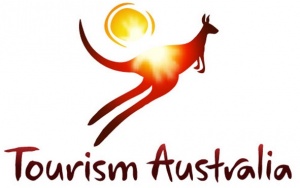‘Team Australia’ approach to aviation development takes off

Tourism Australia has been voted best destination marketer in Asia by the airline and airport industry at Routes Asia in Mumbai.
The recent achievements of Tourism Australia in helping to market ‘destination Australia’ to international airlines were acknowledged by the international aviation industry.
Tourism Australia took out the ‘Destination’ category at this year’s ‘Routes Asia Marketing Awards’, held overnight in India. The national tourism organisation was recognised for its extensive marketing communications activities and joint campaigns with airlines in tandem with its Australian airport partners.
Tourism Australia Managing Director Andrew McEvoy said the award recognised a ‘Team Australia’ approach to aviation development, focused around longer term strategic agreements (MOUs), co-operative marketing partnerships and marketing support for new airline routes.
“In the past 12 months, Tourism Australia has worked extremely hard with its airport and state and territory tourism partners to coordinate under the one banner and promote Australia internationally. Given the geography of our country and as an island nation, getting the aviation piece right is critically important.
ADVERTISEMENT
“2012 saw us play an increasingly targeted and strategic role in the aviation arena, using partnerships with airlines, Australian airports and state and territory tourism partners to help build demand and grow competitive aviation capacity to Australia,” Mr McEvoy said.
New or enhanced MoU deals signed in 2012 included: Etihad ($6m over 3 years); Virgin Australia (doubling existing $6m to $12m over three years); China Eastern ($9m); Emirates ($14.3m for three years); and China Southern ($9m).
“Beyond these big MoUs, Tourism Australia spent $30 million in partnership marketing with airlines to aggressively promote Australia overseas,” Mr McEvoy said.
Markets covered by these agreements align strongly with Tourism Australia’s balanced portfolio approach and are critical to Australian tourism achieving the Tourism 2020 strategic goal of doubling annual overnight visitor expenditure to up to A$140 billion by decade’s end.
Tourism Australia now enjoys cooperative marketing relationships with most of the largest international carriers by capacity serving Australia, a factor Mr McEvoy believes has been important in the Australian aviation industry experiencing the solid growth it has in the past 12 months.
International air passengers travelling to and from Australia increased 4.8 per cent in 2012, to reach a record 29 million visitors movements.
Tourism Australia also invested $2 million to promote new aviation routes to Australia with funds matched by Australian state and territory tourism organisations and airports.
New airline routes supported in this way during 2012 included Air Asia (Kuala Lumpur to Sydney), Scoot (Singapore to Sydney and Singapore to the Gold Coast), SilkAir (Singapore to Darwin), Qatar Airways (Doha to Perth) and Emirates (Dubai to Adelaide). China Eastern Airlines and China Southern Airlines also commenced new services to Cairns.
“Tourism Australia recognises that air service development is a highly competitive environment and believes adopting a one voice approach provides a clear picture of what Australian airports have to offer international airlines and better leverages the appeal of Australia as a destination,” Mr McEvoy said.
He cited ‘Routes Asia 2012’ as a successful example of the ‘Team Australia’ approach, when Tourism Australia led a high-level delegation of Australia’s major airports to Asia’s leading aviation route development forum – Routes Asia, held in Chengdu in western China - in an effort to attract new international aviation capacity.
Eight Australian international airports - Adelaide, Brisbane, Cairns, Darwin, Gold Coast, Melbourne, Sydney and Perth - were represented on the ‘Australia stand’ which Tourism Australia supported and coordinated. Positive outcomes of this team Australia approach included a sister airport signing agreement between chengdu and Melbourne airports, and the subsequent decision by Sichuan Airlines to initiative new flights between the two cities.

